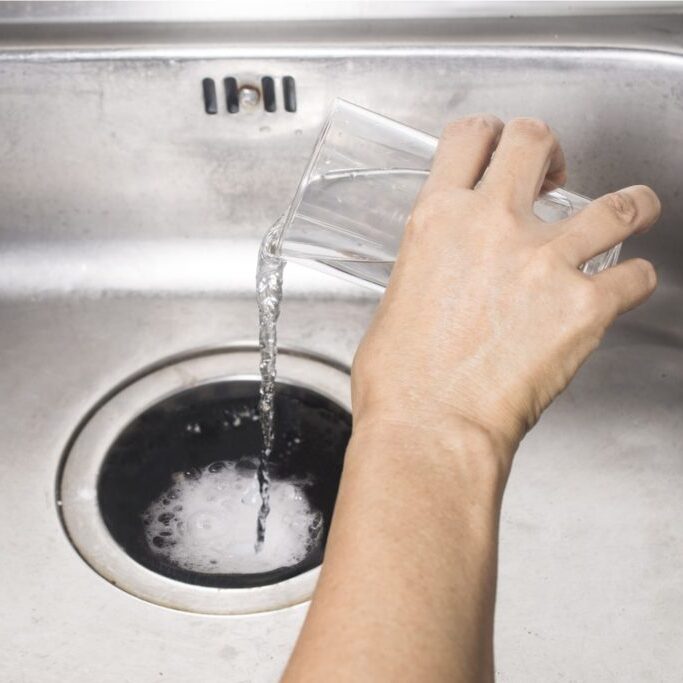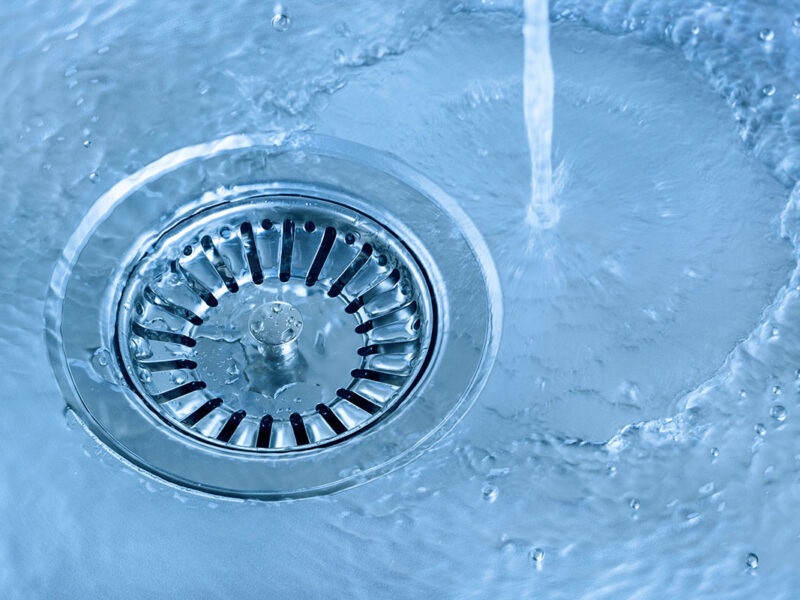This article down below pertaining to Solved! How to Fix a Slow Sink Drain is definitely fascinating. Read it for yourself and figure out what you think of it.

Introduction
We've all existed: You're cleaning your teeth or washing your hands, and you discover the water pooling in the sink. Instead of promptly swirling down the drain, it lingers, transforming your once-refreshing morning routine into a mini swamp scene. A slow-draining sink isn't just annoying; it's frequently a sign of larger plumbing problems lurking below the surface. Fortunately is that a lot of slow-draining sinks can be taken care of with a little expertise, a couple of basic tools, and some perseverance. Prepared to tackle this task head-on? Let's roll up our sleeves and dive right in.
Understanding the Root Causes Of a Slow-Draining Sink
Before you begin poking around in your pipes, it aids to know what might be triggering the slowdown. Recognizing the source makes it easier to pick the right repair.
Devices and Materials You'll Need
The right devices make all the distinction. Fortunately, you won't require a fully stocked plumbing professional's van to do the job.
Step-by-Step Overview to Repairing a Slow-Draining Sink
Currently, let's enter the nitty-gritty. This step-by-step procedure will certainly direct you via easy strategies to restore your sink's water drainage.
Step 1: Eliminate and Tidy the Stopper
Typically, the stopper (that tiny plug you push down to block water) is the initial wrongdoer. Remove it thoroughly and clean off any type of hair or crud trapped around its base. Rinse it completely prior to putting it back in position.
Action 2: Make Use Of a Plunger to Displace Debris
Got that bettor prepared? Position it over the drainpipe and offer it a couple of company pumps. The idea is to develop suction that can loosen any kind of blockage. If you see bits of particles floating up, you're on the appropriate track.
Step 3: Attempt a Drain Serpent or Cord Hanger
If the bettor does not suffice, it's time to highlight the drainpipe snake. Delicately feed it right into the drain and spin as you go. You could really feel some resistance-- that's most likely the clog. Keep turning and drawing up until you eliminate the obstruction. If you do not have a drainpipe snake, a corrected the alignment of wire wall mount can operate in a pinch.
Step 4: Use a DIY Drainpipe Cleaner
An all-natural cleaner made from cooking soda and vinegar can break down residual crud. Put half a mug of cooking soda into the drainpipe, followed by half a cup of vinegar. Let it fizz for around 15 mins, after that flush with warm water. This chain reaction usually does wonders for small clogs.
Step 5: Reassemble and Test the Sink
Put everything back with each other and run the tap. Does the water now swirl down the tubes at a commendable speed? If yes, offer on your own a pat on the back. Otherwise, do not despair-- there are still a few more dress up your sleeve.
Important Tools for Do It Yourself Services
A plunger is your go-to beginning point. A small, sink-sized bettor produces suction that can dislodge minor clogs. For even more consistent blockages, a drainpipe snake (in some cases called a plumber's auger) functions wonders. A set of gloves, a flashlight, and perhaps a set of protective safety glasses are also helpful.
Recommended Cleansing Solutions
Light recipe soap and warm water can assist break down greasy accumulation. A blend of cooking soft drink and vinegar is a reliable natural remedy, and chemical cleansers provide a more eco-friendly method. Maintain chemical drainpipe cleansers as a last option, as they can be extreme on your pipes.
Typical Wrongdoers Behind Slow Water Drainage
So, what's obstructing points up? Commonly, it's a blend of everyday debris-- assume hair, soap residue, toothpaste residue, and remaining food fragments. Gradually, these tiny bits collect and cling to the pipe wall surfaces, slowly narrowing the passage and making it harder for water to pass through. In some cases, mineral deposits from hard water can also include in the substance, producing the ideal tornado for persistent blockages.
When is it Time to Do Something About It?
If you notice the water draining pipes slower than typical, it's a good concept to step in sooner as opposed to later on. Waiting also long might result in finish clogs, undesirable odors, and even pipeline damages. If the water takes more than a couple of secs to clean out after turning off the faucet, consider it a red flag and prepare yourself to put on your do it yourself hat.
Safety And Security First: Precautions and Preparations
Prior to you launch into unclogging mode, think of safety. You're taking care of potentially unclean water and particles, so slip on a set of handwear covers. If you're using chemical cleaners, ensure the area is well-ventilated and adhere to the directions on the tag.
Safety Equipment and Work Space Configuration
Set some old towels or dustcloths around the sink location to catch splashes. Remove any kind of things that could get in your method, like soap dispensers or toothbrush holders. Make certain you have great illumination-- grab a flashlight if required.
Alternate Approaches for Stubborn Clogs
Not all blockages are produced equivalent. If your sink still rejects to coordinate, take into consideration these alternate remedies.
Sodium Bicarbonate and Vinegar Approach
We currently touched on this, yet it's worth keeping in mind again. This gentle, environmentally friendly approach is more secure than chemical cleansers and usually fairly efficient.
Enzymatic Drainpipe Cleaners
Enzyme-based cleaners use all-natural bacteria to digest raw material. They're an exceptional selection if you're wanting to prevent rough chemicals. Simply bear in mind, they may take a bit longer to work their magic.
Chemical Drainpipe Cleaners: Benefits And Drawbacks
Chemical cleansers can blast with tough obstructions quick, yet they're not without disadvantages. They can create warmth and fumes, damage pipelines if utilized exceedingly, and pose environmental risks. Use them sparingly, and always comply with the directions thoroughly.
Safety Nets to Keep Your Sink Flowing
Prevention is the best remedy. By embracing a few easy behaviors, you can keep your sink from decreasing to begin with.
Normal Cleaning Up Habits
Wipe down the sink container and fixture location frequently. Get rid of hair or food bits before they have a chance to wash down the drainpipe.
Preventing Unsafe Substances Down the Drain
Reconsider prior to unloading coffee grounds, oil, or fibrous vegetable scraps down the sink. These perpetrators hold on to pipeline walls, developing obstructions with time.
Regular Maintenance Checks
Schedule a fast month-to-month examination. Run warm water with the sink for a few mins, focusing on the flow. If it appears sluggish, act quick before it becomes a full-on clog.
When to Call a Specialist Plumbing Professional
Sometimes, despite exactly how hard you attempt, that clog simply will not move. That's when it's time to bring in the pros.
Indications That Show a More Significant Issue
If your sink drains pipes gradually despite numerous attempts, or if you see water backing up in various other fixtures (like your shower or bathroom), you might have a more significant plumbing issue hiding much deeper in the system.
Stabilizing Do It Yourself Initiatives with Expert Aid
While DIY can save you cash and use a sense of accomplishment, there's no pity in calling a specialist. A specialist plumbing technician can examine your entire plumbing arrangement, guaranteeing there's no underlying damage or long-lasting problem that could cost you more down the road.
Contrasting Costs and Long-Term Solutions
Prior to deciding, think about the big picture. An inexpensive, quick fix might address the trouble momentarily, however investing in an extra permanent remedy could conserve you cash and tension in the long run.
Considering the Expenses of DIY vs. Specialist Fixes
Do it yourself fixes usually cost little bit more than the price of a plunger or a bottle of baking soda. Specialist services, on the other hand, included a price yet might stop repetitive concerns and costly repair work later.
Purchasing High Quality Fixtures and Upgrades
If your sink's design contributes to frequent clogs, it might be worth updating to higher-quality components or altering the plumbing layout. Consider this an investment in your house's capability and convenience.
Verdict
A slow-draining sink can seem like a minor irritation, however it's usually a sign that your plumbing requires a little TLC. By recognizing the root causes, employing the right tools and techniques, and dedicating to easy safety nets, you can maintain your sink moving easily. And when all else fails, never think twice to contact a specialist-- your home's plumbing is worth the investment in treatment and maintenance.
Three Common Ways to Fix a Slow Drain
Baking Soda Method
Boil a full pot of water. Measure out cup of baking soda and pour it down the drain. Then take cup of the magical cleansing substance known as white vinegar and drop that down there too. Allow the mixture to fizz in the drain for five minutes as the vinegar and baking soda combine. Now dump in that whole pot of boiling water. This combination of cleaning substances should clear out anything that is causing your sink to drain slowly. If it doesn t...
Zip-It
If the baking soda method doesn t clear out your drain, it may be because a significant amount of hair and/or other debris has collected there and you need to remove it. Purchase a Zip-It tool at any home improvement or hardware store and insert it into your drain. It will catch any collected hair or debris that s blocking the flow of water. Pull it out. If it s got a big clump of hair, etc. on the end, you ve probably got your culprit.
Drain Cleaner
If these methods don t work, there is the standard drain cleaner that you can also buy in a hardware store or even your local grocery store. It s better if you can use a household solution, but these drain cleaners often work in a pinch. They re very simple to use. You generally just dump them in your drain and wait. If even this method is not effective, it may be time to call the plumber.
https://www.mrrooter.com/oneida/about-us/blog/2017/july/three-common-ways-to-fix-a-slow-drain/

I recently found that piece of writing about How to Fix a Slow Draining Sink when doing a search on the web. For those who enjoyed our page plz do not forget to share it. Thanks for taking the time to read it.
Call Today